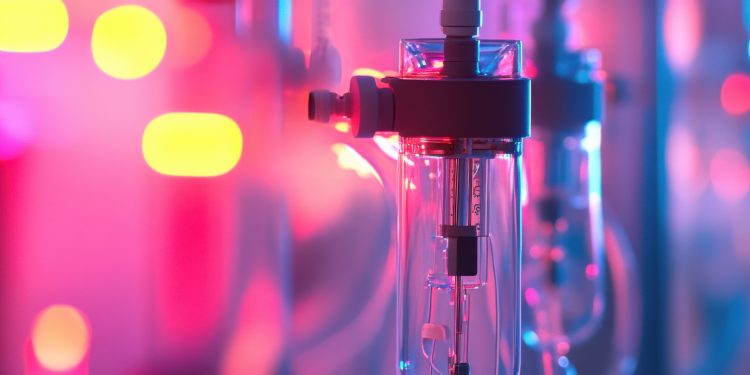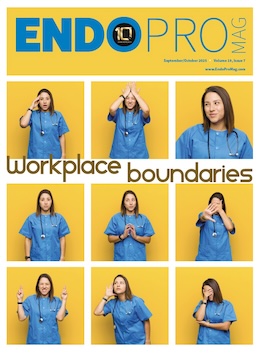From drug-infusion pumps to heart-rate monitors to low-battery warnings to bed alarms firing off for routine body shifts, the number of alarms calling out to clinicians has skyrocketed in recent decades. Hospital audits have tallied hundreds of alarms per patient per day, most of them inconsequential or false. The resulting “alarm fatigue” not only contributes to clinician burnout but can degrade patient care, according to the American Association of Critical Care Nurses.
It’s a vicious cycle of noise, as each new alarm must get itself noticed above the prevailing din, and one of the big topics I cover in my book “Clamor: How Noise Took Over the World— And How We Can Take It Back” (Norton, May 2025). I zero in on the problem of signal overload and potential fixes in hospitals and elsewhere in the chapter, “All the Machines That All Go Beep.”
The chapter explores alarm management, technology solutions and quiet times. It also argues for paying closer attention to the sounds themselves, to make them more helpful and less distracting, which is part of the story (excerpted below).
Fighting Sonic Inertia
The battle against alarm fatigue is not simply about volume control but also about revamping hospital soundscapes to better support clinicians and patients. Momentum for this larger cause continues to build on multiple fronts.
Among those working to extricate hospitals from the noisy trap of their own making is Yoko Sen, a sound designer and composer of breathy ambient electronic music in New York City. About a decade ago, after an extended hospital stay, she co-founded Sen Sound with her husband. Through countless interviews and workshops with patients, clinicians and medical-device makers, Sen and her team encourage people to think expansively beyond the beeps, not only focusing on the hospital noises they want to escape but also considering how to create a better soundscape for healing.
During Sen’s hospitalization, she lay surrounded by machines beeping with unflagging urgency, and she thought about a neuroscience study she’d read, which suggested that hearing is the last sense to go before we die. Would this piercing chorus of beeps be her final sendoff? It seemed so tragic. At one point, an alert on her bedside monitor sounded so shrill and persistent that her husband flagged down a nurse for help.
“Oh, don’t worry,” the nurse reassured him. “That thing just beeps.”
Telling this story, Sen laughs at the notion of a machine that “just beeps,” without meaning or apparent purpose beyond sounding its unceasing electronic yawp. But the vignette also captures
the neglect of the wider soundscape that lies at the heart of alarm overload. Its cacophony is a result of the decades during which hospitals accumulated sound-emitting technologies with little regard to the mounting cognitive burden they might place on staff and patients. In 2018, for example, a lead product developer at Philips, a prominent medical device company, contacted Sen after watching a talk she gave and invited her to work with his team. He admitted that his company had largely ignored the alarm sounds their patient monitors made, despite devoting decades of engineering and countless dollars to research and development of the machines’ other aspects. Eventually, he traced the current alarm sounds to a cassette tape dating from 1981.
This is an example of “sonic inertia,” and it wasn’t surprising to Sen. Constant beeps might keep patients awake and anxious, and they might stress out busy nurses and doctors, but as long as they successfully snagged clinicians’ attention, they worked, and the sounds they made were left alone.
Sen’s first challenge, therefore, was to raise expectations of alarms beyond basic functionality.
Collaborating closely with the Philips product-design team, she played the company’s then-current alarm sounds to gatherings of doctors and nurses and asked, “If the patient monitor was a person, who would it be to you, based on these sounds?”
“A drill sergeant,” somebody said. Others suggested a dictator, an ignored boss, or a petulant toddler.
When asked what they might prefer, the clinicians said they wanted the monitor to sound more like a coach, a friend, or some other helpful and supportive person.
“I wish it to be a colleague,” one doctor ventured, “with the same interests as myself: to do what’s best for the patient.”
The next step was a series of virtual workshops to solicit broader thoughts on hospital alarms from both clinicians and laypeople in a dozen countries. The project team dissected the transcripts of these sessions, clustered common themes, and ultimately distilled eight criteria for a successful alarm. Half of them related to “functionality,” such as being simple to learn and locate in space, easy to distinguish amid background noise, and quick to stimulate a response. The other half were measures related to “sensibility,” including how startling, aggravating, fatiguing or distracting the current sounds were.
With these criteria as a guide, Sen Sound and Philips’s product designers started reworking the sounds for low-, medium- and high-priority alarms. Clinicians had said they wanted the low- and medium-priority alarms, which they heard most often, to be less aggressive, so the team slowed the pacing of the beeps and made them softer and “rounder,” more like chimes with lingering notes. Medium-priority alarms were distinguished from low-priority ones by making them a bit more percussive and higher pitched, “like a gentle tap on the shoulder.”
High-priority alarms kept the original pacing of beeps, but the timbre was tweaked to make it less shrill and harsh—clinicians said they wanted to be “warned without being jolted.”
The project team then gathered feedback via two rounds of online surveys embedded with sounds—first they tested a handful of alternative alarms against each other and then pitted the winning alternatives for low-priority, medium-priority, and high-priority alerts against the originals. They asked listeners to give their preferences and to rate the alarms on the eight criteria.
This led to a surprising discovery. Everybody had expected significant tradeoffs between functionality and sensibility. They assumed that the acoustic qualities that grab attention and prompt immediate action would be opposite in nature to those that make sounds softer, gentler, warmer or smoother. Yet survey respondents mostly ranked their preferred sounds higher in both functionality and sensibility. And they preferred the new sounds to the originals overall. Philips adopted the redesigned sounds in 2023.
Solutions to hospital noise that have staying power will move beyond squashing problem sounds and proactively consider the bigger sonic picture: soundscapes matter for healing.
As a coda to Sen’s time in the hospital, she composed a “final sound” mix of music and spoken word (recordings from people she’d ask to describe the final sounds they’d want to hear in this life).
The voices talked about the sounds of water as a source of life, a transformative force, or the reassurance of breaking waves reaching out from a vast, unfathomable ocean. Others spoke about hearing the voices and laughter of loved ones, a chorus of birds that could kindle a “feeling of the morning when I’m waking up to something new,” or simply a rhythmic beat strong enough to “carry me to whatever’s next.”
For nearly five minutes, the piece echoed with final sonic wishes.
Not one beep could be heard among them.








